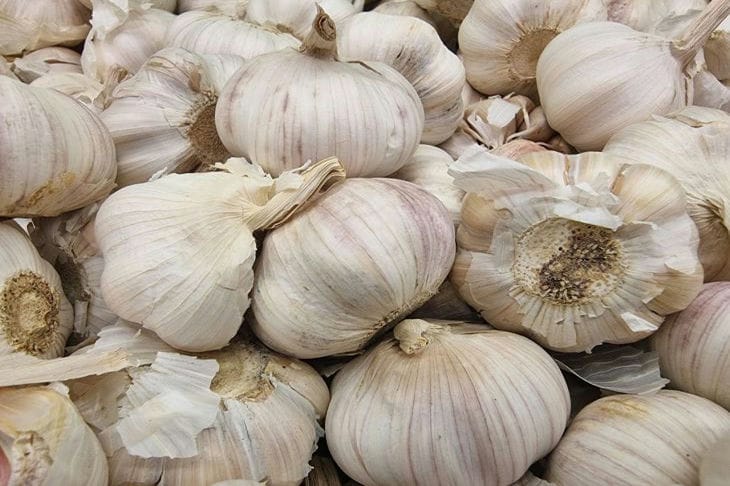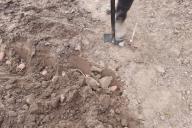The choice of garlic variety for planting in the garden plays an important role in obtaining a healthy and productive plant.
The type of garlic can be selected based on the following parameters:
1. Climate conditions: The choice of garlic variety depends on the climate prevailing in your area. Some varieties grow best in temperate climates, while others are meant for warm regions. Therefore, before choosing a variety, it is necessary to consider the climate conditions of your region.
2. Taste preferences: Each type of garlic has its own unique taste and aroma. Depending on what kind of taste you want to get, you can choose the appropriate variety.
3. Disease Resistance: Some varieties are more disease resistant than others. If you want to minimize the risk of your plants getting diseases, choose varieties that have good disease resistance.

4. Harvest Time: Some garlic varieties are ready to harvest earlier than others. Choose varieties that fit your gardening schedule and harvest time.
Some of the popular varieties of garlic that can be used for growing in your garden include:
- Eastern Red
- Matsuno
- Luki Ryabchik
- Karakamba
- Bulbanchik
- White-toothed
Selecting soil and planting site
1. Good drainage
The soil for garlic should be well drained, which will help prevent the roots from rotting during watering or after rain.
2. Loose soil
Loose soil consisting of sand, clay and organic matter is ideal for growing garlic. This will allow the roots to grow and develop quickly.
3. Soil nutrition
The soil should be nutritious and contain enough minerals. To fertilize the soil, you can use compost, humus, organic fertilizers or mineral fertilizers.
4. Location of the site
The area for growing garlic should be located in a well-lit and wind-protected place to provide the plants with sufficient light and heat.
5. Green manures
Green manures can be used to improve soil fertility. For example, before planting garlic, you can plant beans, peas or lupines, which will supply nitrogen to the soil with sunflowers.
6. Checking the acidity of the soil
To determine the acidity of the soil, you can use special tests. Garlic prefers slightly acidic or neutral soils with a pH of 6.5-7.5.
Preparatory measures before planting: soil cultivation technology, soil preparation for planting garlic
1. Clearing the area. It is necessary to remove from the area all grass, roots and stones that may interfere with plant growth.
2. Weeding and surface tillage. Before planting, the soil should be well-threshed to remove weeds and loosen the soil structure. You can also surface-till the soil with a cutter or a cultivator.
3. Determining the acidity of the soil. If the soil in the area is too acidic or alkaline, it is necessary to apply appropriate fertilizers or lime to adjust the pH.
4. Adding compost or humus to the soil. To improve soil fertility, you can add compost or humus to the area. They will provide the necessary nutrients to the plants.
5. Applying mineral fertilizers. Applying mineral fertilizers (such as phosphorus, nitrogen, and potassium) can also give good results. It is necessary to apply fertilizers taking into account the requirements of a particular garlic variety and the composition of the soil.
6. Seeds. It is necessary to select healthy and large garlic cloves and separate them from the shell located on top. The cloves should not be left in water overnight or for a long time, so that they do not germinate.
7. Planting depth. Garlic should be planted at a depth of 5-7 cm with a distance of 10-15 cm from each other. It is important not to plant the garlic too deep to prevent downward sprouting (instead of upward) and thin-style growth.
Planting garlic in the garden
1. Prepare the site: choose a sunny place with fertile soil, remove weeds and stones, level the surface.
2. Make beds about 20 cm wide and 10 cm deep. Leave passages at least 30 cm wide between the beds.
3. Separate the garlic into cloves. Choose healthy, large cloves.
4. Plant the cloves in the ground every 10-15 cm, immersing them to a depth of 3-4 cm. Leave a distance between rows of about 30-40 cm.
5. After planting, water the area and make sure the soil around the cloves is moist.
6. Feed the plants with organic fertilizers in spring and midsummer.
7. Remove weeds and leaves to ensure the garlic gets enough sunlight.
8. Harvest garlic in late July to early August when the leaves begin to turn yellow. Remove the cloves from the soil and air dry them for 3 weeks.
9. The number of garlic cloves grown on the plot depends on your desires and the needs of your home kitchen.
Caring for Garlic
1. Watering. Garlic needs regular watering, especially during the period of active growth. Optimum soil moisture is moderate, but not too dry and not too wet.
2. Spraying. During the growing season, garlic should be sprayed with a solution of Bordeaux mixture. This will help prevent the development of fungal diseases and pests.
3. Weed removal. Garlic does not compete strongly with weeds, so the rows between plants need to be weeded regularly.
4. Fertilizer. Garlic needs fertilizer, especially at the beginning of the growing season. Organic fertilizers are good - compost, humus, ash.
5. Pruning: Garlic does not need to be pruned, but if the plant begins to turn yellow and dry out, you can remove the top to help the plant concentrate its energy on growing the bulb.
6. Harvesting. Garlic is harvested in August-September, when its tops begin to turn yellow and yellow. The bulbs are dug up and dried in the sun for 5-7 days.
Storing Garlic
1. Dry the garlic before storing. Garlic should be dried well in the sun or on a ventilated surface for 2-3 weeks.
2. Store garlic in a cool, dry place. Do not store it inside the refrigerator, as too low a temperature and high humidity can cause the product to spoil.
3. Store garlic in clusters. Place the garlic in small clusters, wrap them in paper or put them in breathable fabric bags.
4. Use glass or ceramic containers. These materials do not absorb odors and will help preserve the aroma and flavor of garlic.
5. Do not store garlic with other foods. Garlic emits volatile oils that can be absorbed by other foods, causing them to acquire an unpleasant odor.
Earlier we talked about how to get rid of dandelions on the lawn.








